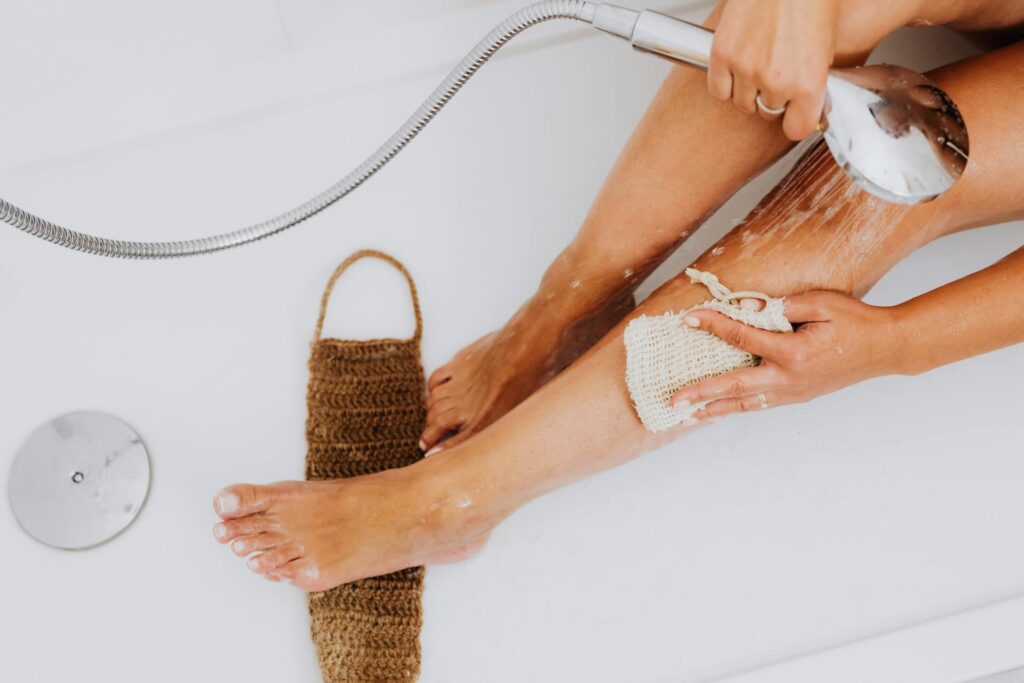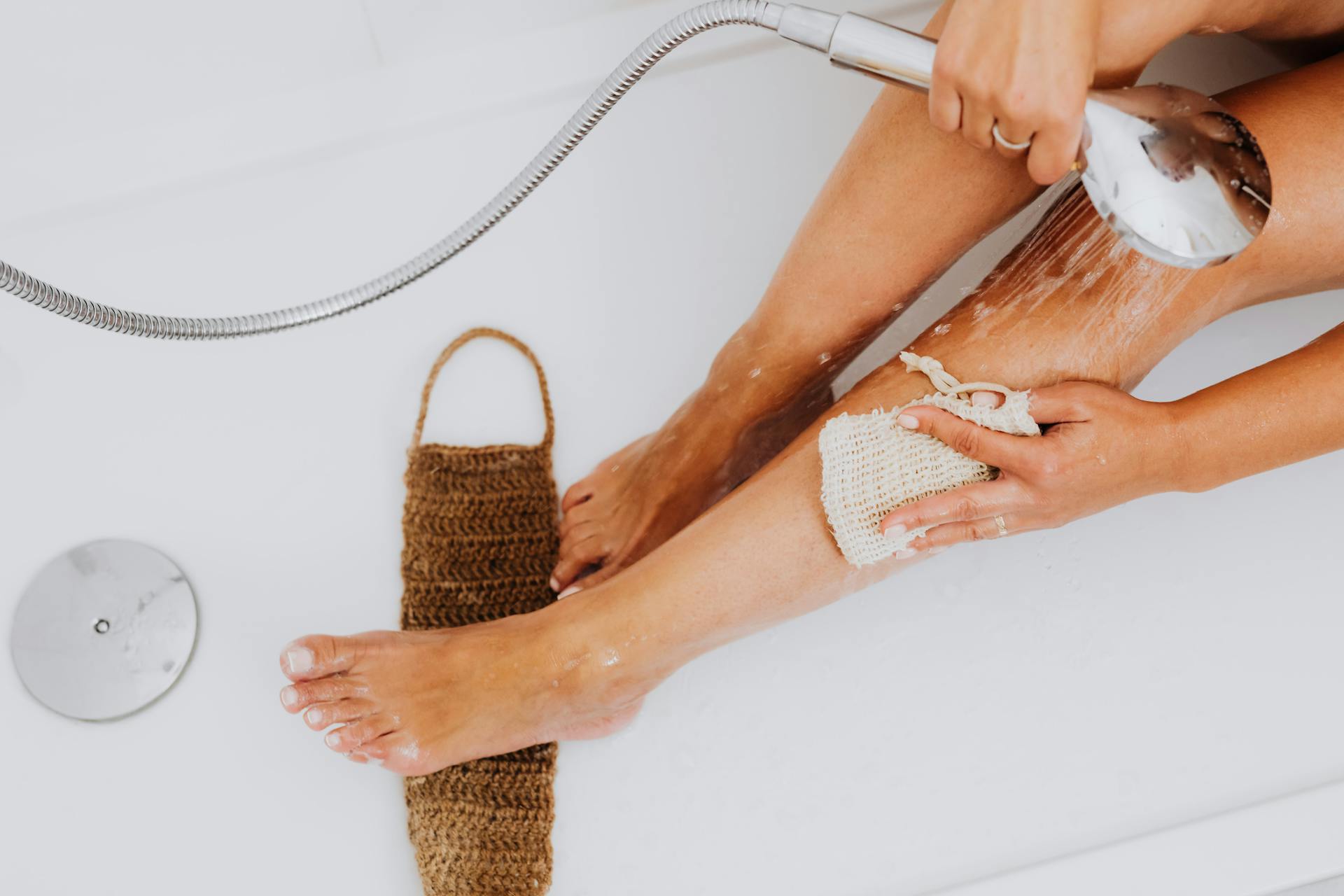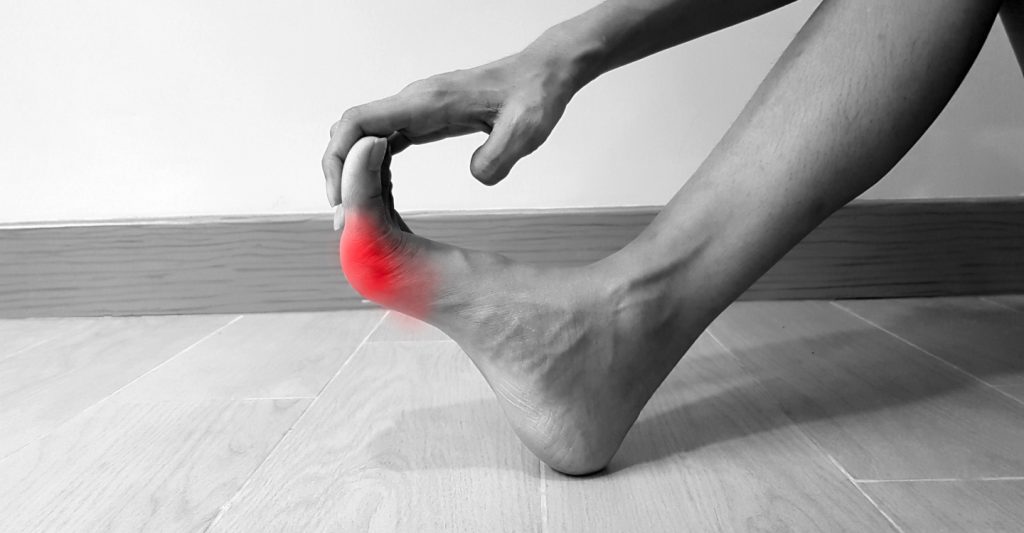Often, I get a call from the patient who was taking a hot shower, and the next thing they see is a pile of blood on the bathroom floor. In a panic they quickly call the paramedics. The paramedic arrives, wraps their leg, elevates it and brings them to the emergency department. They come to realize that they have a weakened vessel or varicose vein that is close to the surface and it has opened.
One puzzling phenomenon many have experienced is veins bleeding after a shower. This is a common experience that leaves its victims scared and wondering why. It is essential to understand the causes and effects of public health reasons.
We will explore why your veins pop out after a hot shower. This includes examining what causes it to happen and the importance of our awareness of issues related to vein health. Once people understand the situation of spontaneous bleeding veins after showering, they can better understand how to maintain their vascular health and under proper medical guidance where necessary.

Understanding Veins and Their Function
Veins play a crucial role in the intricate network of our circulatory system. They work to bring blood back from the body part and bring it back to the heart.
Veins are not the same as arteries. What’s more, in their shape alone, the two kinds of blood vessels are drastically different and fulfill precisely opposite functions: while an artery consists mainly of a thick muscular coat that can withstand immense pressure from the pumping heart, a vein has thin walls with purse-strings that close at certain times called “valves”. Their purpose is to allow blood to flow up and not back down. In the legs, the veins have to bring blood flow against gravity.
The one- way valves ensure the flood travels upstream against gravity. Over time, due to various risk factors, the thin vein wall weakens and gets enlarged. The one- way valves cannot approximate, thus instead of the blood flowing upstream, it trickles back down the leg. The poor functioning vein valves are called vein insufficiency. Over time, the backflow of blood leaks into veins close to the surface and a bulging varicose vein forms. A varicose vein close to the surface is the one that can open and bleed, after a hot shower.
Loss of vein function can significantly impact one’s overall health. Healthy veins carry oxygen to cells and haul away waste products, ensuring efficient circulation. In the process, they also remove carbon dioxide from the body too. All that changes when the veins fail or malfunction for other reasons like aging, genetics or lifestyle choices – causing circulation headaches like varicose veins, thrombosis, edema and other issues.
To achieve and maintain your healthiest possible vein state, you can make simple healthy lifestyle choices such as regular walking, watching your weight, not sitting or standing for too long periods at work, and always wearing an elasticated stocking or compression stocking under trousers if you are stuck in a job that requires it. If you have any signs related to blood clots in your veins, you must seek immediate medical intervention from a professional.
Are Your Varicose Veins Bleeding After a Shower?
When we are in a hot shower and standing there is a lot of vein pressure bringing the circulation toward your feet. If you suffer from varicose veins it is difficult for that blood to return back to the heart. A hot shower will also cause the vessels to dilate and there is an increase in pressure bringing the flow upward. The skin softens over the weakened vessel and with the increase in circulatory pressure the potential to break the vessel open and bleed is increased.
The problem is not the bleeding vessel that had opened, but the underlying venous insufficiency and poor circulation returning blood to the heart. The bleeding vessel is a side effect of a longer standing problem. That problem is a poor return of blood back to the heart due to poorly functioning vein valves. The purpose of the vein valves is to ensure flow upward against gravity. When the valves do not work effectively the blood flows backward towards the ground. It is that backflow of blood that causes swelling in varicose veins.
The Impact of Heat on Veins
Excessive heat can damage your veins. Although the body’s mechanisms for raising the temperature with increased blood circulation and dilated veins are a normal and beneficial response, sustained exposure to excessive heat can have unwanted consequences for vein health.
Thinning of Vein Walls: In prolonged periods of hot weather, vein walls dilate, enlarge and become weakened making it more susceptible to injury or rupture. Like a balloon that is inflated and deflated multiple times, it loses its elasticity and the plastic balloon eventually pops from the pressure. When people have venous insufficiency causing varicose veins (the balloon) they are at risk for the vein wall to pop like the balloon. This weakening is severe for people with a medical conditions such as varicose veins, spider veins or venous insufficiency, who have preexisting veins and need them kept strong.
Increased Risk of Bleeding: Increased blood flow combined with a weakened vein wall can set up conditions for vein bleeding, especially in the already strained or tense parts of the vein. This increased vulnerability to bleeding can show as minor cuts and tears in the wall of the vein, which may cause you to have spurts of blood following hot showers.
Relaxing and being soothed by a hot bath or shower are all good, but exercise prudence. Those with conditions—including injured veins that puncture easily—or who suffer frequent vein bleeding on account of their condition and blood type should not risk extended exposure to heat in long baths or showers.
The impact of heat on veins bleeding after a shower, especially given hot showers, brings to light the delicate balance between the body’s temperature control systems and vein health. While the dilating action of heat-induced dilation onto blood vessels is an essential tool used by the body to maintain its temperature regulation in good condition, excessive exposure to high temperatures can threaten this balance and lead to both a weakened state of veins and an increased incidence of vein bleeding episodes. This dynamic shows people how to take action against decreased vein health; it explains whence bad things come and how sinew strength is declining.
Why Are Your Veins Bleeding After a Hot Shower?
Hot showers can make varicose veins particularly susceptible to bleeding. There are several reasons for varicose veins bleeding after shower:
- Weakness of Vein Walls: The weakened or damaged walls of varicose veins are less able to withstand changes in heat-induced dilation. When exposed to high temperatures, it can easily buckle
- Greater Blood Flow: Conditions such as hot showers can only increase pressure on an already engorged vessel, stretching it beyond its limits and requiring every exertion of strength to keep it from bursting.
- Altered Blood Circulation: Nevertheless, if you get engaged for long periods like this in an environment that raises body heat continuously and cuts off ventilation, blood circulation slows down considerably, and oxygenation does not proceed normally. This can even lead to shock. In such cases, it will bruise with tiny amounts of force applied since the tissues in these areas clot faster than in other areas.
Overall, weakened vein walls and loose valve function make varicose veins especially susceptible to bleeding in hot environments.
Blood Pooling in Legs After Shower and Vein Bleeding
In varicose vein or venous insufficiency-related blood pooling in the legs, blood piles up in the lower extremities against back pressure. Because of poor blood vessel functioning, there is also less venous return to the heart. This raises pressure within these veins, thus making them prone to stretching and bursting suddenly if under stress. It also exacerbates their condition by weakening their walls more. Since blood in the legs is prone to stagnation, legs are further predisposed to vein bleeding episodes.
Mechanisms by Which Hot Showers May Exacerbate Blood Pooling
In particular, blood pooling in legs after shower occurs because of a few mechanisms, among which are:
Heat-Induced Vasodilation: The heat of the water causes veins to dilate (enlarge) their diameter, thereby increasing their capacity for holding blood. This can aggravate blood pooling, especially in people with weakened veins already.
Reduced Venous Return: A third mechanism is that heat-induced dilatation can impair venous return, making it more difficult for blood to flow efficiently back to the heart. This reduction in venous return exacerbates blood pooling in the legs and thus increases one’s chance of experiencing bleeding.
Gravity: When standing or sitting upright, gravity pulls blood downward, increasing the pressure on veins in the lower extremities. Weakened or damaged vein valves cannot adequately prevent blood reflux, which leads to bloody stagnation and elevates pressure within veins.
Weakened Vein Valves: Vein valves are essential for promoting venous return by preventing blood from flowing back down the veins. When vein valves become weakened or damaged, blood can flow backward, greatly increasing the danger of venous bleeding.
Blood pooling in legs after a shower is heavily influenced by many things, such as heat exposure, gravity or problems in your vein valves. In particular, hot showers can compound the build-up of blood in the legs, leading to vasodilation and poor venous return, thus increasing your chances of vein bleeding episodes. This applies particularly to those vulnerable groups with venous insufficiency or varicose veins. Knowing these mechanisms, individuals are prompted to take the appropriate action, such as avoiding exposure to prolonged heat and adopting methods that enhance venous function and circulation of blood in the legs. Addressing these factors will mean individuals can reduce the risk of vein-related complications and improve general vein health.
Conclusion
Vein bleeding after hot showers is common, probably leaving people puzzled and anxious about its true causes. Factors that may lead to bleeding from the vein include heat-induced vasodilation, increased blood flow, and weakened vein walls, especially in those with varicose veins or venous insufficiency.
It is crucial for people to understand why their veins bleed so that they can take appropriate preventive measures and seek medical help when necessary—particularly if bleeding recurs frequently or continually.
Proper maintenance and care of veins, coupled with receiving attention from a doctor as soon as possible, form an essential part of managing vein complications.
By raising public awareness, seeking appropriate medical treatment, and supporting continued scientific inquiry, we can increase our understanding of vein health and encourage people to take proactive measures to pursue better vascular health. Let’s always think about vein health and strive through research to improve comprehension of the standard though little-understood part of the circulatory system.
Visit Foot, Ankle & Leg Vein Center
If you are suffering from spontaneous bleeding after a hot shower, you must get a vein specialist examination.
The Foot, Ankle & Leg Vein Center is your local podiatrist in Boca Raton and Boynton Beach, FL. We diagnose and treat all kinds of foot, ankle, and leg vein care, including bleeding in your veins.
Dr. Jason Gold, DPM, and Dr. Jodi Schoenhaus, DPM, specialize in leg vein-related conditions. Both doctors also have extensive experience in spider vein and varicose vein care. Contact us today to get the best treatment for your symptoms and conditions.
References
Campbell B, Dilley C, Gohel M. Bleeding from varicose veins: advice in primary care and referral. British Journal of General Practice 2022; 72 (722): 448-449. DOI: 10.3399/bjgp22X720677
Cheng JL, MacDonald MJ. Effect of heat stress on vascular outcomes in humans. J Appl Physiol (1985). 2019 Mar 1;126(3):771-781. doi: 10.1152/japplphysiol.00682.2018. Epub 2019 Jan 24. PMID: 30676869; PMCID: PMC6459390.
Johnson JM. Exercise in a hot environment: the skin circulation. Scand J Med Sci Sports. 2010 Oct;20 Suppl 3:29-39. doi: 10.1111/j.1600-0838.2010.01206.x. PMID: 21029188.
Savage MV, Brengelmann GL. Reproducibility of the vascular response to heating in human skin. J Appl Physiol (1985). 1994 Apr;76(4):1759-63. doi: 10.1152/jappl.1994.76.4.1759. PMID: 8045857.



